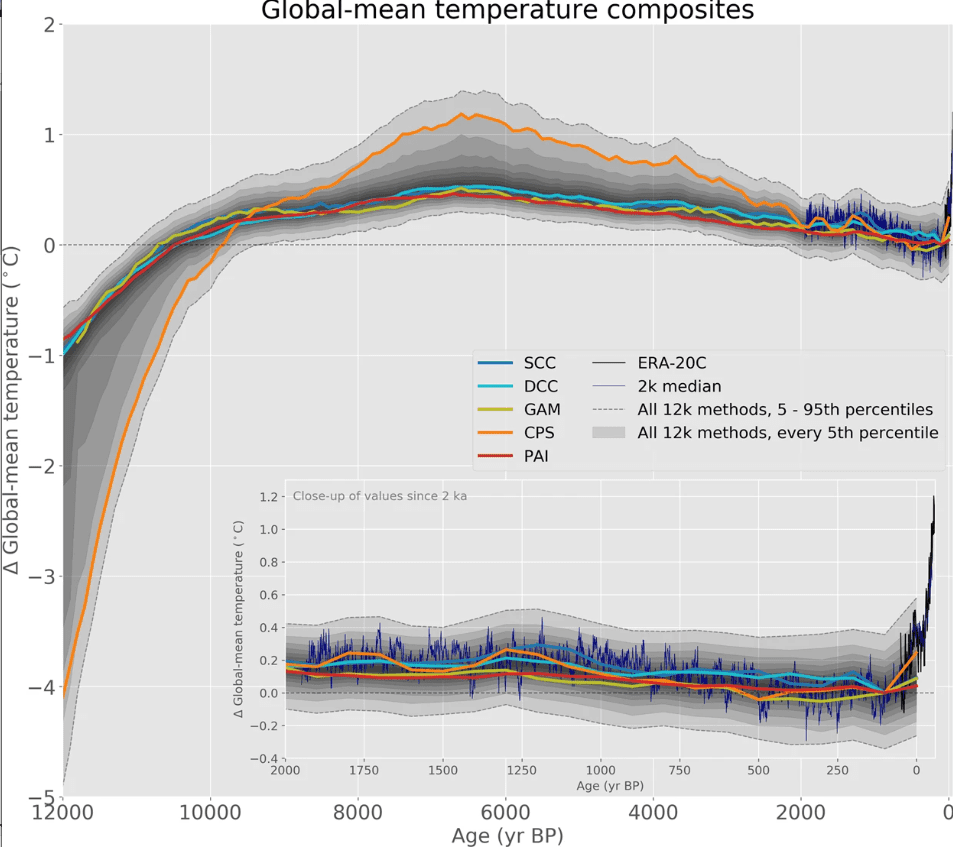The world should have been going through global cooling right now — but then came humans
For the past 6,500 years, the global has largely been on a cooling trend until humans started burning coal

Researchers at Northern Arizona University analyzed climate data spanning the last 12,000 years and found that human activity reversed a long-term natural global cooling period. Instead of decreasing surface temperatures, as it should have happened naturally, human greenhouse gas emissions have warmed the world by 1°C, on average, since the Industrial Age.
At the world’s natural peak warming period, temperatures rose by only 0.1 °C in 1,000 years
The consensus among researchers on anthropogenic global warming has grown to 100%, based on a review of 11,602 peer-reviewed articles on “climate change” and “global warming” published in the first 7 months of 2019.
However, if you turn on the TV or head to social media, you’ll notice that among laymen the notion of man-made climate change is extremely polarized. This gives the false impression that the jury is still out on the matter.
The planet’s average surface temperature has risen about 1.62 degrees Fahrenheit (0.9 degrees Celsius) since the late 19th century. Most of this warming occurred in the past 35 years, always following the curve of rising global greenhouse gas emissions, with the six warmest years on record taking place since 2014. But how do the detractors of global warming explain the obvious accelerating rate of warming that we’re experiencing today?
Most often, climate change skeptics will play the ‘natural variability’ card, claiming that the sudden warming we’re experiencing now is owed to variations in the sun’s strength or earth’s orbit around the sun. Such claims have been debunked time and time again, but this new study is even more revealing because it shows what natural variability really looks like.
The first thing one notices is that, throughout most of Earth’s geological history, climate change has always been slow. Notable exceptions are cataclysmic events such as the late Cretaceous asteroid impact that wiped out the dinosaurs, unleashing sudden global cooling, and a mass extinction event that wiped out 95% of all life on land.
For their new study, Michael Erb and colleagues at Northern Arizona University analyzed a dataset of paleoclimate data, spanning the last 12,000 years.
Humans have been recording surface temperatures just since the 19th century. However, there are proxies that scientists can use to infer temperature fairly accurately as far back in time as millions of years ago.
For instance, the dataset includes temperature readings inferred from lake deposits, marine sediments, peat, coral, and glacier ice cores collected from 679 sites across the world.
Using this information, the researchers were able to chart changes in surface air temperatures over the last 12,000 years, or right after the last Ice Age ended. They then compared their data points to those recorded in the 19th century, when humans first started to burn copious amounts of fossil fuels to sustain the furnaces of a then-rising industrial revolution.

The chart shows that at the beginning of the study period, temperatures were much colder than in the 19th century — but that was only expected seeing how during that time much of Europe was still covered in ice.
Temperatures gradually rose, eventually surpassing the 19th-century baseline, peaking around 6,500 years ago — and ever since, the planet has been a trend of global cooling.
“The rate of cooling that followed the peak warmth was subtle, only around 0.1 °C (0.2 °F) per 1,000 years,” Erb said in a statement. “This cooling seems to be driven by slow cycles in the Earth’s orbit, which reduced the amount of summer sunlight in the Northern Hemisphere, culminating in the ‘Little Ice Age’ of recent centuries.”
Compare this rate of warming to the nearly 1 °C of warming since the mid-19th century — the rate of change is literally off the charts.
“It’s possible that the last time the sustained average global temperature was 1°C above the 19th century was prior to the last Ice Age, back around 125,000 years ago when sea level was around 20 feet higher than today,” added Darrell Kaufman, lead author of the study.
The findings were reported in the journal Scientific Data.

Comments
Post a Comment